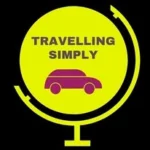The year is drawing to a close and we feel a sense of satisfaction for accomplishing our planned travel goals with a few unplanned journeys thrown in.
As we prepare to toast in a New Year, memories of a few special days in the Champagne region of France come to mind.
After a few days of seeing the city through Parisienne eyes and wandering the rues and boulevards of Paris, we collected our car to begin our road trip.
First stop is the city of Reims. The unofficial capital of the Champagne region in the northeast of France is the perfect place to base ourselves for a day or two to explore the region.
Reims is not only the centre of the Champagne. It is home to some architectural wonders, including the imposing Notre Dame Cathedral (where French kings came to be coronated), the beautiful City Hall, the Basilica St Remi and many admirable squares.

Reims Town Hall

The Basilica
Many of the regions Champagne houses including Taittinger and Mumm are headquartered in Reims and offer tastings at their cellar doors. Their houses are accessed through grand entrances and beautifully manicured gardens. An indication of the high esteem the French hold for champagne.
After admiring the city, we spend a couple of days exploring further afield.
Day 1 is a short 25km drive to Epernay, the home of the world’s highly acclaimed champagne houses.
On arrival, we find the streets deserted and not teeming with tourists as we had expected at the height of the European summer. It is lunchtime and everything apart from eating establishments are closed for lunch.
The Avenue de Champagne is undoubtedly one of the most beautiful streets we stroll along. Even more stunning when you have the street to yourself. We wander in and out of the grand champagne houses amidst beautiful grounds and gardens. These are the best champagne producers in the world!

The beautiful grounds of Moet and Chandon
We are disappointed at our first stop, the famous house of Moet and Chandon. The cellars are closed for refurbishment until after summer. We are directed a little further up the road to the House of Mercier. A partner of Moet and Chandon and owned by the LVMH group of companies, Mercier champagne is the most popular champagne in France. Eugene Mercier established his champagne house with the intention of making champagne readily available and affordable to all so that it was not only consumed for a special event but so it would become part of everyday occasions. The tour of the underground caves (18km long), on a laser-guided autonomous tram, provided an insight into champagne production, the different stages of the ageing process along with an added surprise – the remarkable basal reliefs that decorated the walls of the underground caves.

The ageing process – inside the caves

The huge champagne barrel which was carted through the streets of Paris to be displayed at the Paris Exhibition in 1889
Of course, the tour would not be complete with a tasting. We enjoyed tasting the “wine for the people” complete with a lesson on how to distinguish between the different varieties. Though not connoisseurs, and now having tasted both Moet and Mercier champagnes, we agreed, both were not dissimilar!
The day ended with a leisurely drive back to Reims through the vineyards around Verzenay.
Day 2 is a beautiful summer day to take a slow 30-minute drive along the backroads among grapevines and vineyards to Hautvillers, home of another vintage champagne, Dom Perignon. The roads are quiet and we wonder why we have the roads to ourselves, there is not another vehicle in sight. It appears that everyone else is in a hurry and prefers to take the motorway.
Dom Pérignon (1638–1715) was a monk and cellar master at the Benedictine abbey in Hautvillers, a quaint French village. His tomb is in the little Abbey and remains devoid of tourist traffic.
We wander through the village and along the narrow lanes to find picnic grounds at the top of the hill. The views over vineyards and down to the little village of Cumieres and the aqua waters of the River Marne are breathtaking. This is heaven.

Looking down the hill to Cumieres from Hautvillers
It is decided, we drive back to Reims via Cumieres on roads set amongst the vineyards and the gently sloping countryside through small champagne villages. The perfect end to a perfect day.
Our road trip had just started and we continued our journey through Burgundy, Provence, Bordeaux and the other wine producing regions of France. However, we will cherish our few days in Champagne.
If you are planning a visit to Paris and have a couple of spare days, take a short sojourn in the Champagne region, you will not regret it.
P.S. A short champagne lesson:
Brut – 40% pinot noir, 45% another white wine, 15% Chardonnay, contains 9% sugar. Brut is aged for 2 years and is then ready to drink. It should not be kept for more than 3 years.
Rose – has red wine added.
Demi-Sec is much sweeter with up to 40% more sugar. It is a dessert wine.
Brut Reserve has more reserve wine added and the taste can change from year to year depending on the reserve added.
No year on the bottle – no vintage!






